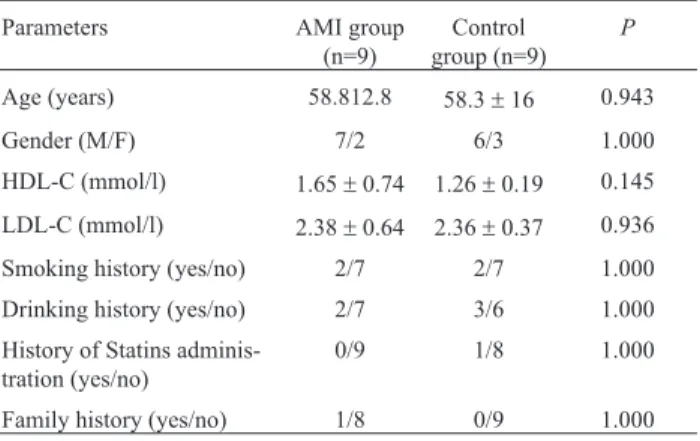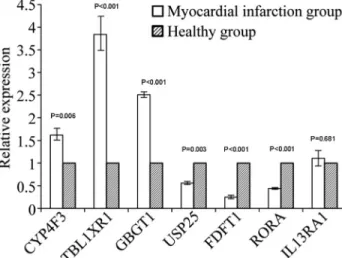Differential gene expression profiles in peripheral blood in Northeast Chinese Han people with acute myocardial infarction
Texto
Imagem



Documentos relacionados
Cytokine gene expression in peripheral blood mononuclear cells and tissues of cattle infected with Mycobacterium avium subsp. paratu- berculosis : evidence for an inherent
The objective of this study was to evaluate the p53 protein expression in leukemias and the TP53 gene mutations in patients with chronic myeloid leukemia.. Peripheral blood and
In the initial evaluation with the patient complaining of thoracic pain, the electrocardiogram examination showed an alteration suggestive of acute myocardial infarction (AMI) in
Anomalies associated with changes in blood flow may result in sudden death, myocardial ischemia, and acute myocardial infarction. Some of those anomalies are as follows: coronary
Yeasts can grow in the blood of patients with disseminated histoplasmosis, and in severe acute cases, yeasts can be detected inside white blood cells on a peripheral blood smear
In summary, we demonstrated the presence and expansion of CD14 + /HLA-DR low/− monocytes, in the bone marrow and peripheral blood, of patients with the diagnosis of B-cell
Fig 1. Hierarchical clustering of genes detected as differentially expressed in rapid versus slow progression PD patients. Classification based on expression signals of
To determine the potential usefulness of KLK2 and KLK3 as biomarkers in the diagnosis of prostate cancer we used multiplex semi-quantitative RT-PCR to detect mRNA in prostate